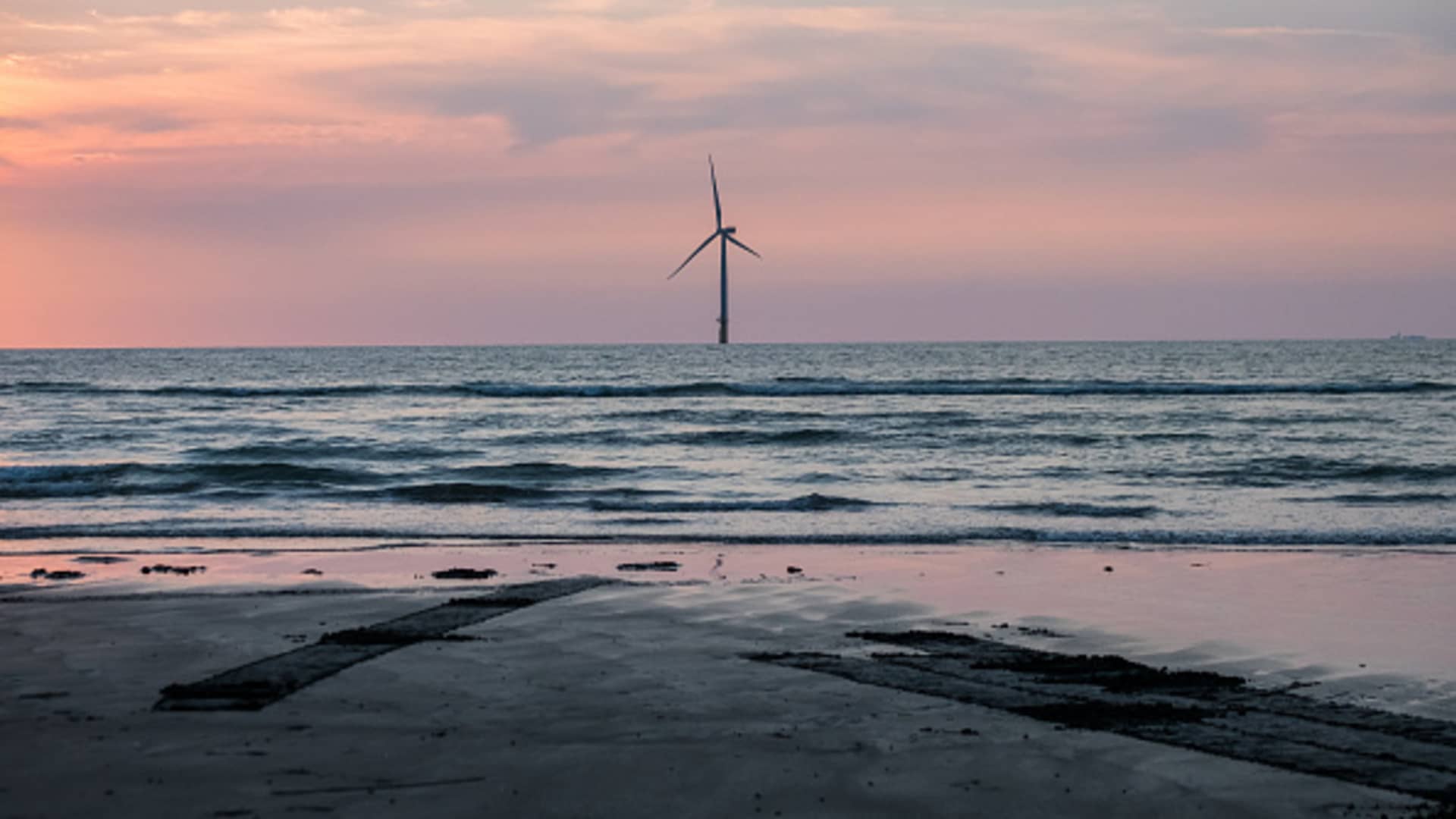Products You May Like
A large-scale offshore wind farm in waters off the coast of Taiwan has produced its first power, with those involved in the project describing the news as a “major milestone.”
In a statement Thursday, Danish energy firm Orsted said the first power at the Greater Changhua 1 & 2a facility was delivered on schedule following the installation of its initial set of wind turbines.
Electricity, it said, had been “transferred to Orsted’s onshore substations via array cables, offshore substations, and export cables. The renewable energy was fed into the national grid via Taipower’s substation.” Taipower is a state-owned utility.
Situated 35 to 60 kilometers off Taiwan’s west coast, the scale of Changhua 1 & 2a is considerable, with Orsted describing it as “Taiwan’s biggest offshore wind farm.”
It will have a capacity of approximately 900 megawatts and use 111 turbines from Siemens Gamesa Renewable Energy. Capacity refers to the maximum amount of electricity installations can produce, not what they’re necessarily generating.
It’s hoped that construction of the project will wrap up this year. According to Orsted, the facility will eventually generate enough power to meet the needs of 1 million households in Taiwan.
“Delivering the first power as scheduled is a major milestone for both Orsted and Taiwan,” Christy Wang, who is general manager of Orsted Taiwan, said. “This has not been an easy task, especially with the COVID-19 pandemic challenges during the past two years,” Wang later added.
Thursday’s announcement represents a step forward for Taiwan’s offshore wind sector but a report from the Global Wind Energy Council, published in April, highlighted how things have not all been plain sailing.
“Taiwan should have commissioned more than 1 GW [gigawatt] of offshore wind capacity from three projects last year based on the project COD [commercial operation date] plans, but only the 109 MW Changhua demonstration came online in the end,” the Global Wind Report for 2022 said. The delay, the GWEC added, had been “primarily caused by COVID-19 related disruption.”
In Asia, the GWEC’s report puts Taiwan second only to China in terms of planned offshore wind installations in the near to mid-term.
According to the trade association, China is slated to add 39 GW of offshore wind over the next five years, with Taiwan set to install 6.6 GW. Vietnam, South Korea and Japan are seen as adding 2.2, 1.7 and 1 GW respectively.
Taiwan’s Ministry of Economic Affairs says it’s targeting 20% renewable energy generation by the middle of this decade.
“The goal for PV [photovoltaic] installation has been set at 20GW by 2025, while offshore wind power is expected to exceed 5.7GW,” it says. Solar photovoltaic refers to a way of directly converting sunlight into electricity. Authorities in Taiwan also want natural gas to account for 50% of power generation in 2025.
Shifting Taiwan’s generation mix to one where renewables have a larger role represents a big task. Citing data from the Ministry of Economic Affairs, Taiwan’s Bureau of Foreign Trade says 44.69% of total power generation in 2021 came from coal firing.
Natural gas’ share amounted to 36.77%, with nuclear responsible for 9.63% and renewables 5.94%. Fuel oil and pumped-storage hydroelectricity contributed 1.87% and 1.10%.
